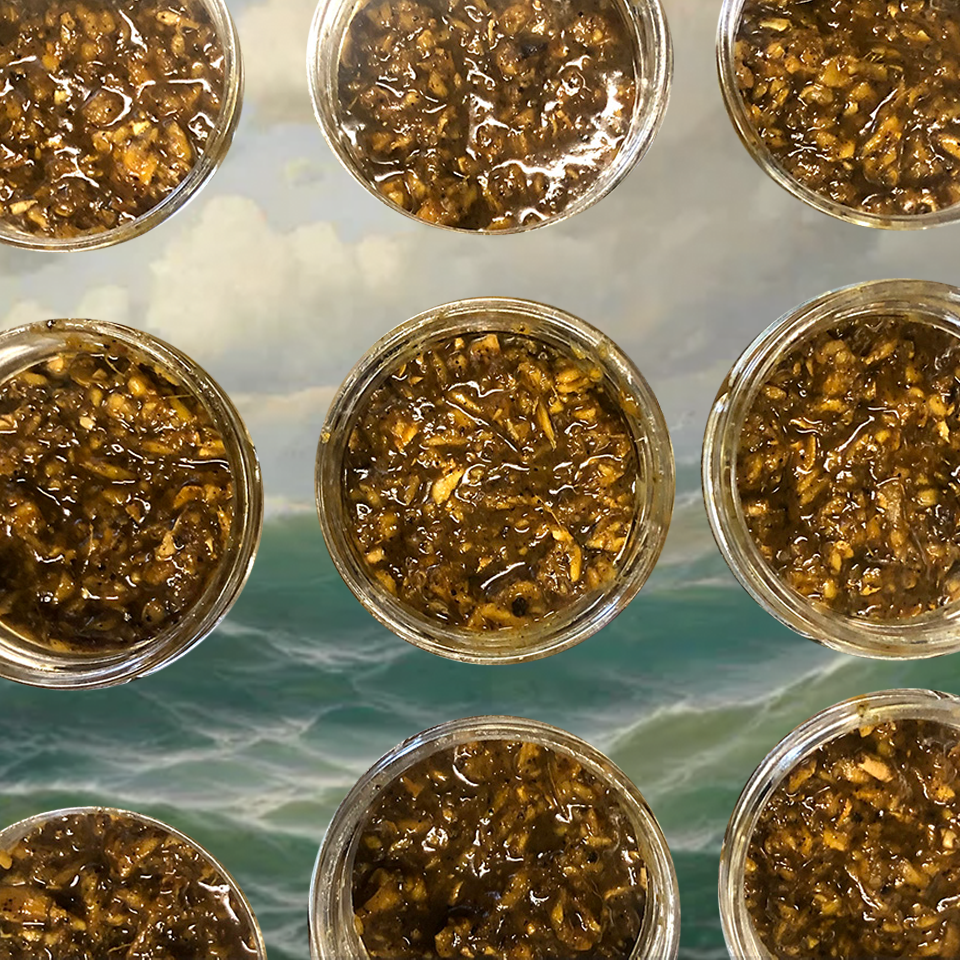In honor of the availability of our products along the Hudson River via SHIP FREIGHT in the belly of the SCHOONER APOLLONIA, we wanted to highlight the important relationship between preserving food, medicine and intercontinental trade!
One of the attractive features of the trade that believed to have existed between imperial Roman cities and India in ancient period was the exchange of preserved foods. As the long sea journey between Mediterranean and Indian Ocean took many months, sometime years, it created a demand for foods that can remain stable for long time and also accentuate the taste and potency through aging of ingredients. It is interesting to think about the food materials that were used and techniques employed then to make such preserved food especially when there was no electricity or refrigeration/ freezing facilities.
Atina Food’s Inji Puli is one such food which has vital connection with the history of this maritime navigation. The rain forests of the Western Ghat mountains on the South West coast of India has been argued by many as the possible birth place of medicinal herbs like turmeric, ginger, black pepper, tamarind and many such vast varieties of plants and animals since time immemorial. The monsoon trade winds passes through the mountains brought heavy rain which rivers carried it to the Indian Ocean where it get evaporated to rainy clouds by hot Sun. Within this grand cycle of water transformation, an incredible living habitat has existed. It is a geographical region of immense bio diversity and has attracted human beings from all over the world for its spices, natural wealth and human creations.
Inji Puli is one such human discovery from this region which was used by the people who understood the practice of treating food as medicine and medicine and food. Gifted by abundance of natural materials they created amazing varieties of food some of which stay fresh for long time and were used by sailors who undertook long sea voyages.
Inji Puli is a way to eat naturally preserve whole Ginger rhizome in combination with other beneficial medicinal herbs preserved in tamarind and jaggery, a pure cane sugar, which ensures a regular supply of beneficial compounds such as digestive enzymes, amino acids, vitamins, metals and minerals along with clean cane sugar in easily absorbable forms. If taken daily in small quantities, it regularly it boosts the immunity system of the body. Inji Puli is naturally shelf stable for a long period of time.
You can find more about the health benefits and various usages of Inji Puli in other postings on this blog, as you will see, we Love it alot!
Recipe for chocolate almond tart! (vegan, GF : ). The Taste of Inji Puli, Inji Puli; Hot and Spicy or Not, Water and preservation of Inji Puli, taste and properties of Inji Puli.
As Atina Foods takes pride in also working with local produce and foods to find their unique and tasty healing properties. After discovering the one cultivatable edible plant remaining on our property when we moved to our house upstate, RHUBARB, we immediately realized that this would make a divine local version of INJI PULI! Our RHUBARB GINGER HERBAL JAM, is just that, for this we replace the need to be imported Tamarind, with very local Rhubarb! It is a little bit more naturally sweet, with a similar tartness, and just as beneficial digestively, with a bit of tasty familiarity!
Buy our Inji Puli / Buy our Rhubarb Ginger Herbal Jam
Furthermore, in this post, I would like to share some features that I am familiar about this great maritime navigational trade.
Many archaeological studies which looked at the sites of ancient port cities on the west and east costs of India such as Muziris and Arikamedu, similar sites in South East Asia, Eastern China, East coast of Africa Like Bernice and in the Mediterranean Europe reveals some great features about the food culture that existed during this Maritime Navigation period.
A cursory look at the abundance of material evidences, or artifacts, one could guess that there was some great exchanges of preserved foods existed between the human cultures across continents some 2,000 years back. Large deposits of fine ceramic, terracotta, metal and wooden barrels have been identified as the remains of vessels to store and transport large quantities of food materials. The famous Roman amphora vessels made of fine fired clay in Mediterranean Europe, made with great expertise and beauty, is one such vessel to store and transport wines from Roman cities to Africa, India and China. Similarly many other varieties of pottery sherds excavated by archeologists reveals that these artifacts were the remains of vessels to store and transport fermented foods like cooked condiments, pickles and dry ingredients across the ocean
According to many archaeological studies, Roman sailors took off their journey from the coasts of Mediterranean Europe and Africa sailed down towards the west coast of India en route Arabian peninsula and return home within an year using trade winds of Indian Ocean. They were following the practices of their predecessors, the sailors of Greek empire, who believed to have discovered this safe round trip to India using the seasonal South West and North East monsoon trade winds of Indian Ocean for forward and return journey. They set off sail from African ports during the beginning of June and enters the vast waters of Indian Ocean and travel along the route of the windy stormy heavy rainy South West monsoon which originates from the deep areas below African continent and arrived at the ports of the west coast of India by late July or early August. From there, the sailors traveled to the harbor cities of South East Asia and China sea via East coast of India and Bengal Ocean. They return to their ports of origin in Africa and finally to Europe using the same open sea route with the help of stormy rainy North East trade winds, which originates from the upper Himalayas and travel down to deep areas below African continent in late November/ December, which help the sailors to reach home by February/ March. This remarkable expedition of human endeavor using deadly stormy monsoon trade winds and sailing through open waters of the largest water body of the planet, Indian Ocean, created an incredible civilization of exchanges of knowledge, materials skills, cognitive practices between people of India , Arabia, Africa and Europe. According to many scholars this exchange practices survived during a period between 300 BC to 300 AD with its peak at the turn of millennium.
Poduke was one of such ancient port cities located in the south of the city of Pondicherry on the South Eastern coast of India where large amounts of physical artifacts originated from several Roman cities were found. The name of the city found mention in the classical Greco-Roman navigational records particularly the famed book, Periplus of the Erythraean Sea by Anonymous author. The archaeological remains of the city, presently known as Arikamedu, is located on the south side of the Ariyankuppam river estuary where it meets the Bengal Ocean, part of the Indian Ocean, . Arikamedu has been archeologically proved as an important harbor for the Roman ships traveling between the west coast of India and the ports of the South East Asia and China.
I was fortunate to spend a few years around the archaeological site of Arikamedu, which gave me some opportunities to look at the physical evidences or excavated artifacts and trenches. Among the vast varieties of materials ceramic, terracotta, fired clay potteries and glass objects assume tremendous significance not only for its abundance in quantity but for it technologies and varieties in making, amazing visual imagery depicted on its bodies, massive sizes, easy to handle forms and many other features. Those were the remains of amphora and other storage vessels of wine, pickle jars and other naturally preserved food.
Personally, this is also the city where I met my wife Carrie, on a deadly hurricane day many years back when the North East monsoon trade wind devastated most of the East coast of India. We went to Arikamedu site, on our very first meeting on that rainy windy rainy day, our first journey together in life, which is still continuing. We stood on the banks of the Ariyankuppam river watching the eroding mounts washing away into the sea, the physical evidences of a great saga disappearing forever or transcending to other realities I don’t know.
But Inji Puli, a legacy of that maritime navigation history, continues to survive through Atina Foods on the foothills of great Manitou mountains on the banks of mighty Mahicantuck, Hudson river! As well, transformed locally into our Rhubarb Ginger, ready to take on the long haul!
References
My works on Arikamedu : essay on Arikamedu, community Museum.







